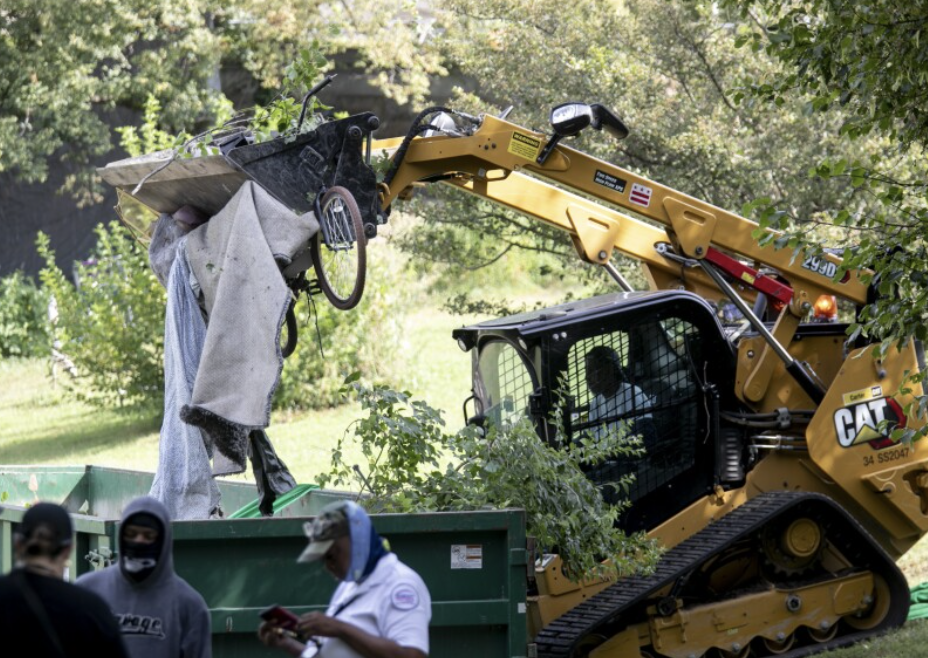In Washington, D.C., President Trump has launched a federal crackdown on visible homelessness. In mid-August he federalized the Metropolitan Police Department, deployed the National Guard, and ordered the removal of encampments throughout the city. The administration boasts that dozens of encampments have been cleared, and the result on the ground has been bulldozers, trash trucks, and forced displacement.
People who had been living outside New York Avenue Presbyterian Church, a longtime day center for the unhoused, were told to remove their belongings immediately or face arrest. Many had nowhere else to go. Some moved into temporary shelters, others spent nights in emergency rooms or hotels if they could find space, and many simply shifted to other sidewalks or parks. Residents who had just finished school or were working nearby explained that they were no longer able to plan for the future but instead had to focus on finding another place to sleep that was less visible to law enforcement.
Outreach workers describe the cycle as deeply destabilizing. People are pushed through multiple displacements, sometimes their ninth or tenth in just a few years. Shelters remain crowded and are often avoided by those who fear illness, separation from partners or pets, or the trauma of crowded environments. The federal crackdown has made people less visible but no closer to stability or housing. Advocates note that it has also made outreach harder, since residents are deliberately hiding from police and from service providers.
At the same time, Trump has signed an executive order ending federal support for the housing first model, which research has consistently shown to be the most effective strategy for reducing homelessness. Instead of creating pathways to housing, his approach relies on policing, encampment bans, and short-term shelter beds.
Trump’s approach is familiar to those living on the Westside of LA, where Councilmember Traci Park has advanced criminalization and sweeps. Her social media feeds and newsletters highlight constant “cleanups,” showing sanitation crews discarding tents and bedding, LAPD units towing vehicles, and fencing going up around cleared areas. She presents these operations as progress, framing them as measures to restore order and return public space.
The Human Rights Watch report on Los Angeles shows what is actually happening. Park has used LAMC 41.18 to designate almost 100 zones where unhoused people cannot sit, lie, or sleep. These zones have expanded the reach of LAPD and sanitation teams into encampments, where people lose identification documents, medication, and personal belongings.
The outcomes closely mirror what’s happening on the ground in D.C.. Encampments are emptied, but people remain unhoused. Outreach teams report that only a small fraction of sweeps lead to housing placements. Most people simply reappear nearby, often with fewer possessions than before. Human Rights Watch calculates that unhoused people, who make up less than one percent of the city’s population, account for more than a third of all LAPD arrests. Sweeps have become a system of punishment for existing in public space rather than a pathway to stability.
Both Trump and Park describe their work as a way to increase safety and cleanliness. In practice, both are shuffling people from one block to another while diverting resources away from permanent housing. The destruction of tents and belongings becomes the visible sign of action, but homelessness persists in new and less visible corners.
Advocates in both cities emphasize that true solutions come from housing and supportive services. When people secure permanent supportive housing, they are overwhelmingly able to remain stably housed. Outreach and case management succeed when people are not being constantly displaced. Research shows that housing first approaches reduce homelessness effectively and at lower cost than repeated sweeps.

